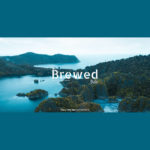「Brewed – Bali」Beach themed café design challenge
主題:
咖啡作物生長在埃塞俄比亞的荒野中,遊牧部落使用咖啡已有數千年的歷史,直到14世紀人們才發現可以烘烤咖啡的種子。到了15世紀,這種飲料已經傳播到阿拉伯世界的咖啡館。早在1530年,咖啡館最早出現在土耳其、敘利亞和埃及。但由於它們成為政治討論的熱點,它們被一再禁止。

隨後,整個16世紀,咖啡館開始在歐洲和北美遍地開花。據說法國和美國的革命是在咖啡館裡醞釀的。
咖啡館是聚會的理想場所,介於精神意義和正式餐廳之間。在這裡,通過交談,創造力和創新蓬勃發展。長期以來,他們一直與作家、藝術家和知識分子聯繫在一起,代表著一個安全舒適的空間來分享新聞、討論哲學或政治。這種創新的激增不僅是由於空間的設計——來自不同背景和專業領域的人們的物理聚集——而且也歸功於咖啡本身。
即使在幾個世紀之後,咖啡的社會功能仍然在世界許多文化中發揮著重要作用。咖啡館或咖啡館形成了咖啡文化的中心舞台。
咖啡館在現代社會中的重要性為其自身勾畫了一個新的定義。像星巴克這樣的咖啡連鎖店開始了一場新的革命,將“咖啡”文化推向全球。
咖啡館仍然是人們交談、社交或工作的中心。現在,咖啡館已經被裝飾成零售、活動中心等多功能角色,吸引了從遊客到當地人的各種各樣的人。它們共同扮演著一個城市身份的象徵,聚集著它的人群。
咖啡館提供的咖啡可能會因你所處的世界而有所不同,但咖啡館本身傳遞出的熟悉感和理解力可以超越國界和語言障礙。
挑戰:
咖啡館仍然保持著與4個世紀前相似的形態。它們作為一個封閉和開放的公共空間的混合體,正在向人們提供一個平台,讓人們聚集在一起進行交談或工作。它可以說是一個城市的公共客廳,並在多個方面反映了他們的傳統。
這次的挑戰是設計一個咖啡館,一個超越我們今天看到的咖啡館概念的空間。挑戰的目的是幫助參賽者實踐空間和服務的微觀規劃,將想法轉化為體積、家具和飾面的設計。它試圖探索一個在峇里島海灘上的咖啡館,體現了今天的建築風格,同時從周圍的歷史獲得靈感。
在今天的背景下,咖啡館的全球理念如何轉化為峇里島的區域交流詞彙?
Brewed – Bali Beach themed café design challenge
Bali , Indonesia
Register by : May 17, 2021
Submit by : May 18, 2021
PREMISE
Coffee plants grew in the wilderness in Ethiopia and were used by nomadic tribes for thousands of years, only until the 1400s when people figured out that they could roast its seeds. By the 1500s, the drink had spread to coffee houses across the Arab world. Coffee houses first appeared in Turkey, Syria, and Egypt as early as 1530. Since they became a hotspot for political discussions, they were banned repeatedly.
Subsequently, throughout the 1600s coffee houses began popping up across Europe and North America. The French and American Revolutions were said to have brewed in coffeehouses. Lloyd’s of London, a major insurance company, started as a coffeehouse that was frequented by merchants and sailors.
The coffee house acted as a perfect mid-ground for a meetup, between other options like places of spiritual significance or formal restaurants. Here creativity and innovation thrived through conversations. They have long been associated with writers, artists, and intellectuals and represented a safe and comfortable space to share news, discuss philosophy or politics. This surge in innovation was not only owing to the design of the space – the physical gathering of people from different backgrounds and fields of expertise – but also to coffee itself.

Fig: 2 – A bustling coffee shop today – An illustration
TRENDS
Even after centuries, the societal functions around coffee continue to play an important role within many cultures around the world. Coffee houses or Cafes form the center stage for the coffee culture that has been brewing through this time.
The significance of coffee houses within modern society has charted a new definition for itself. Cafe chains like Starbucks have started a new revolution by making the “cafe” culture global.
Coffee houses are still acting as hubs for making conversations happen, socialize, or work in solace. Cafes now have been decorated with multifunctional roles such as retail, activity center, and attract a variety of people, ranging from tourists to locals. They collectively act as pods of a city’s identity, accumulating its crowd.
The coffee served in coffee houses may differ depending on where you are in the world, but the establishment itself conveys a sense of familiarity and understanding that can transcend borders and linguistic barriers.

Fig: 3 – Seniman Coffee Ubud, Bali – ( Source: Bontraveller )
BRIEF
A coffee house still holds a similar ideology as it did 4 centuries ago. They act as a mixture of close and open public spaces that are transitioning to give people a platform to gather for conversations or work. It can be said to be a city’s public living room and reflects their traditions in more than one way.
Brief: The challenge here is to design a Coffee House, a space that transcends the concept of cafes that we see today.
The aim of these challenges is to help participants practice micro-planning of spaces & services, translating ideas into the design of volume, furniture, and finishes. It seeks to explore a coffeehouse/cafe on a beach at Bali, that embodies today’s architecture style while taking inspiration from its surrounding history.
How does a global idea of a café translate into a regionally communicating vocabulary of Bali in the context of today?

Fig: 4 – Aerial image of one of the Beaches in Bali – ( )
OBJECTIVES
Interior: Furniture, Finishes, Flooring, Material Palette
Planning: Micro Planning of the Cafe Spaces
Lighting: Natural Lighting as well as Fixtures used in the design
Function: Functions of the cafe apart from being a coffee house
SITE
The site for this challenge is located in South Bali, Indonesia. Bali is a province of Indonesia and the westernmost of the Lesser Sunda Islands. East of Java and west of Lombok, the province includes the island of Bali and a few smaller neighboring islands, notably Nusa Penida, Nusa Lembongan, and Nusa Ceningan. Bali is Indonesia’s main tourist destination, with a significant rise in tourism since the 1980s. Tourism-related business makes up 80% of its economy.
The site is located at one of its bustling neighborhoods in the Kaputen Badung suburban region southwards of Denpasar. The site has a major street frontage, with an area to access a lot of different kinds of water sports activities. The site has a beach view as well from the upper levels of the café.

Site Area: ~1200sqm
Max FAR: 0.75
Ground Coverage: 25%
Set Backs: As given in the CAD plan
Height Restriction: 10m
Coordinates: Maps
Current round grants
Winner
150 USD Cash+Crafted Trophy & certificate + Publication + Insignia
People’s Choice
e-certificate
Next round grants
Winner
200 USD Cash+Crafted Trophy & certificate + Publication + Insignia
People’s Choice
e-certificate



